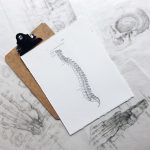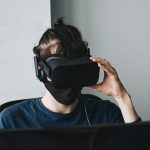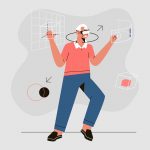Engineering is being redefined thanks to VR and AR technology. There are several design and engineering applications that engineers can take on with VR Technology. A virtual workspace opens up freedom and enhanced precision for engineers, that can help facilitate decision-making in real life. This article intends to explore the various benefits of VR for engineers by sharing insight into the features and softwares of VR that can equip engineers with the right tools to compose solutions to challenging industry problems.
Why VR/AR is Recommended for Engineering
Amazing Mockups
Virtual Reality is used by engineers through Computed Aided Design (CAD) and Computer Aided Engineering (CAE) software programs. These softwares allow engineers to design prototypes and collaborate with fellow engineers using Virtual Reality as an interactive interface. Within this, is a whole list of features that bring to life visualisations of a team’s developments. For example, VR offers multiply viewing options, including;
- 3-DOF (being able to make rotational movements inside a headset)
- 6-DOF (being able to make translational movements and walk in and around a virtual space)
- Dollhouse view (a zoomed out finished version of an unfinished project) and,
- High frame rates (which allows for an object to be replaced by another object).
Virtual Reality redefines engineering by showing a ‘digital mockup’ of projects in the virtual world, so that team members can be on the same page. There is also the flexibility to take measurements and note down annotations onto 3D models using VR hand held controllers.
In fact, designs are made to scale 1:1 and the engineer is able to work efficiently using VR to view errors of design without having to produce real life prototypes using a vast amount of material (as prototypes can be remodelled several times in VR). Likewise, VR can show engineers whether or not adjustments need to be made in terms of the manufacturing line. For existing manufactory lines, laser-scanning techniques or photogrammetry will provide a point cloud of a building, enabling manufactures to check a number of scenarios whilst saving money on avoiding potential mistakes. A potential scenario, as stated by TechViz, is checking to see if new equipment will interfere with current structures.
Down To The Finest Detail
According to TechViz, VR is also being used to review prototypes as it is a cheaper alternative than having the design being built physically. Not only this, but VR is able to capture immense detail, which doesn’t translate near as effectively when viewing CAD designs on a computer screen. TechViz states that
“Interactive virtual reality helps you see and analyse phenomena that would otherwise be invisible to the naked eye.”
Engineers are finding VR to be a huge resource for trial and error of designed spaces, especially more complex projects. Being able to interact in the 3D world enables engineers to become their own evaluators of current prototypes. It is an important aspect to the design process given that it can pinpoint areas in need of further construction, to achieve optimal product design. This can save a lot of headaches, as it enables engineers to tackle design issues through moving and changing parts of a CAD model before it is handed over to the manufacturer to produce.
Safety Comes First
Branching off from the design aspect, is the crucial component of safety. Some environments engineers operate in are highly dangerous. Hence, providing an accessible and short training course using VR, takes the stress off the worker and the team because they know exactly what to expect prior to a job’s commencement. Some engineers are taking immersion to a whole other level by using body tracking gear to see how they react in particular workstations, or using products they have created.
Even remote work, or hiring subsidiaries from different countries, is made easy through VR, as after making alterations to sketches, team members from across countries can view changes right away using a VR headset. The main advantage here is that time is well-spent on the curation of a final product, which speeds up the time it takes before it can be released on the market.
It is evident that engineers can benefit from the digital revolution of VR and AR technology. The best projects from VR/AR have been built on the foundation of ergonomics and precision design. These will be a threat to manufacturing in the future as East London VR company, mbryonic, states that
“While many think of VR as a slow investment technology, VR applications in industrial design and engineering are fast becoming the key to gaining a competitive advantage in manufacturing.”
Written by Lauren Tizzone
Similar articles to check out:







